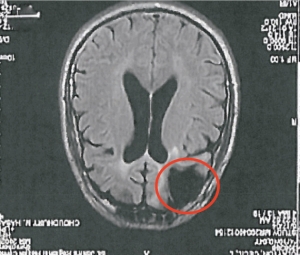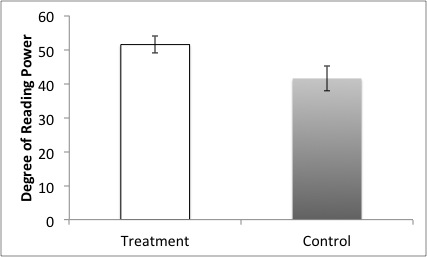
“I can’t believe you drink that stuff.”
I drink diet pop. Though on its face that doesn’t seem controversial, I find myself regularly defending my beverage choice when I crack open a can of Diet Coke. People say it’s bad for me, or it’s “unhealthy”. Why do they think that? My guess is that many people believe that since diet pop contains “artificial” ingredients, it’s not “natural”1, and therefore it’s not “healthy” to drink. When I ask which ingredients in diet pop are “unhealthy”, many people target aspartame. Though I’m not motivated to argue why aspartame might be healthy (or not unhealthy), I’ve thought about the chemical’s safety enough to want write about it here2.
Aspartame is safe
The Food and Drug Administration (FDA) claims, “Aspartame is one of the most exhaustively studied substances in the human food supply, with more than 100 studies supporting its safety.” This claim concerns the general population, but, “people with a rare hereditary disease known as phenylketonuria (PKU) have a difficult time metabolizing phenylalanine, a component of aspartame, and should control their intake of phenylalanine from all sources, including aspartame.” Depending on the country, PKU affects between 1 in 10,000 and 1 in 20,000 individuals, according to the National PKU Alliance.
But aspartame’s safety isn’t obvious after a quick Google search. You can easily find apparent links between aspartame and lupus, multiple sclerosis, vision problems, migraines, fatigue, or Alzheimer’s disease3. Most of these links are weak or inconclusive at best. To add insult to injury, here’s an excerpt from a 1999 Lancet correspondence from two concerned medical professionals:
Patients at our diabetes clinic have raised concerns about information on the internet about a link between the artificial sweetener aspartame and various diseases. Our research revealed over 6000 web sites that mention aspartame, with many hundreds alleging aspartame to be the cause of multiple sclerosis, lupus erythematosis, Gulf War Syndrome, chronic fatigue syndrome, brain tumours, and diabetes mellitus, among many others. Virtually all of the information offered is anecdotal, from anonymous sources and is scientifically implausible.
I think it’s safe to say the number of websites has increased since then. When I Google “aspartame health”, the search returns, “About 1,300,000 results.” Moreover, check out the Google Trend graph below for “aspartame effects” searches since 2004:

These men go onto to explain:
Aspartame, a dipeptide composed of phenylalanine and aspartic acid linked by a methyl ester bond, is not absorbed, and is completely hydrolysed in the intestine to yield the two constituent amino acids and free methanol. Opponents of aspartame suggest that the phenylalanine and methanol so released are dangerous. In particular, they assert that methanol can be converted to formaldehyde and then to formic acid, and thus cause metabolic acidosis and neurotoxicity.
Although a 330 mL can of aspartame-sweetened soft drink will yield about 20 mg methanol, an equivalent volume of fruit juice produces 40 mg methanol, and an alcoholic beverage about 60–100 mg. The yield of phenylalanine is about 100 mg for a can of diet soft drink, compared with 300 mg for an egg, 500 mg for a glass of milk, and 900 mg for a large hamburger1(my emphasis). Thus, the amount of phenylalanine or methanol ingested from consumption of aspartame is trivial, compared with other dietary sources. Clinical studies have shown no evidence of toxic effects and no increase in plasma concentrations of methanol, formic acid, or phenylalanine with daily consumption of 50 mg/kg aspartame (equivalent to 17 cans of diet soft drink daily for a 70 kg adult)1,2.
- in: CR Gelman, BH Rumack, AJ Hess (Eds.) DRUGDEX® System.MICROMEDEX,Englewood, Colorado; 1998 (Edition expires 1999.)
- ADA position statement: use of noncaloric sweeteners. Diabetes Care. 1991
But to be clear, extremely high does of aspartame may have negative health effects. The FDA has set aspartame’s Acceptable Daily Intake (ADI) to 50 milligrams per kilogram of body weight per day, or the equivalent of a 60-kilogram (132-pound) individual consuming 75 tabletop sweetener packets or 24 cans of Diet Coke.


Don’t trust the FDA or some concerned doctors from 15+ years ago? Fair enough. In 2007, Magnuson et al. published a review of the scientific literature on, “the absorption and metabolism, the current consumption levels worldwide, the toxicology, and recent epidemiological studies on aspartame.” They came to conclusions similar to the FDA:
- Current use levels of aspartame, even by high users in special subgroups, remains well below the U.S. Food and Drug Administration and European Food Safety Authority established acceptable daily intake levels of 50 and 40 mg/kg bw/day, respectively
- Acute, subacute and chronic toxicity studies with aspartame, and its decomposition products, conducted in mice, rats, hamsters and dogs have consistently found no adverse effect of aspartame with doses up to at least 4000 mg/kg bw/day.
- No credible evidence that aspartame is carcinogenic.
- No support that aspartame in the human diet will affect nervous system function, learning or behavior.
Very recently (2015), Mallikarjuna & Sieburth conducted a meta-analysis (read: study of studies) of 10 aspartame carcinogenic bioassays on rodents (read: they measured cancer in rodents exposed to aspartame). Similar to above, they found (wait for it):
Based on the current body of scientific evidence, aggregate effect sizes revealed that APM [aspartame] consumed at any dose level has no significant relationship with cancer (occurrence of malignant tumors).
In sum, the weight of the evidence from my casual search suggests that consuming even reasonably large amounts of aspartame is safe for the general population.
That’s aspartame, but what about the other ingredients in diet soda?
Though I think it’s unlikely that aspartame consumption poses any serious saftey threats, diet soda contains other ingredients that may. For instance, many soft drinks, diet soda included, contain caramel color, which is made with ammonium compounds whose manufacture can result in the formation of 4-methylimidazole (4-MEI). 4-MEI is linked to cancer in mice and listed as a carcinogen under the Safe Drinking Water and Toxic Enforcement Act of 1986. In short, caramel color in many sodas may cause cancer. Coke changed its caramel color and Pepsi claims to be doing the same.
Ingredients aside, pop in general is acidic, so it’s probably bad for your teeth. Does that make is unsafe? If you want to claim that eroding enamel has long-term negative health effects, so then drinking diet pop in unsafe, go ahead. Then so is drinking any pop, and yet no one scoffs when someone opens a regular Coke (not because of cancer or toxicity at least).
So…?
It seems to me that diet pop is a low-risk beverage choice. I’m going to keep drinking it and rolling my eyes when people tell me I’m going to get cancer.
- What’s the difference between natural and artificial? There are likely few if any food stuffs in a grocery store that haven’t been adjusted by farmers or scientists or both to meet the preferences and saftey of consumers. Though we can all get a feel for what these words mean when people use them, they’re super hard to really define and I’m just not going to here.
- Healthy is obvious in some senses (e.g., not having Ebola) and less so in others (e.g., time it takes someone to run a mile). I think it’s easier to talk about the safety rather than the healthiness of a chemical, so I’m doing that.
- I used a list I found here to make my list of mythical links to aspartame







